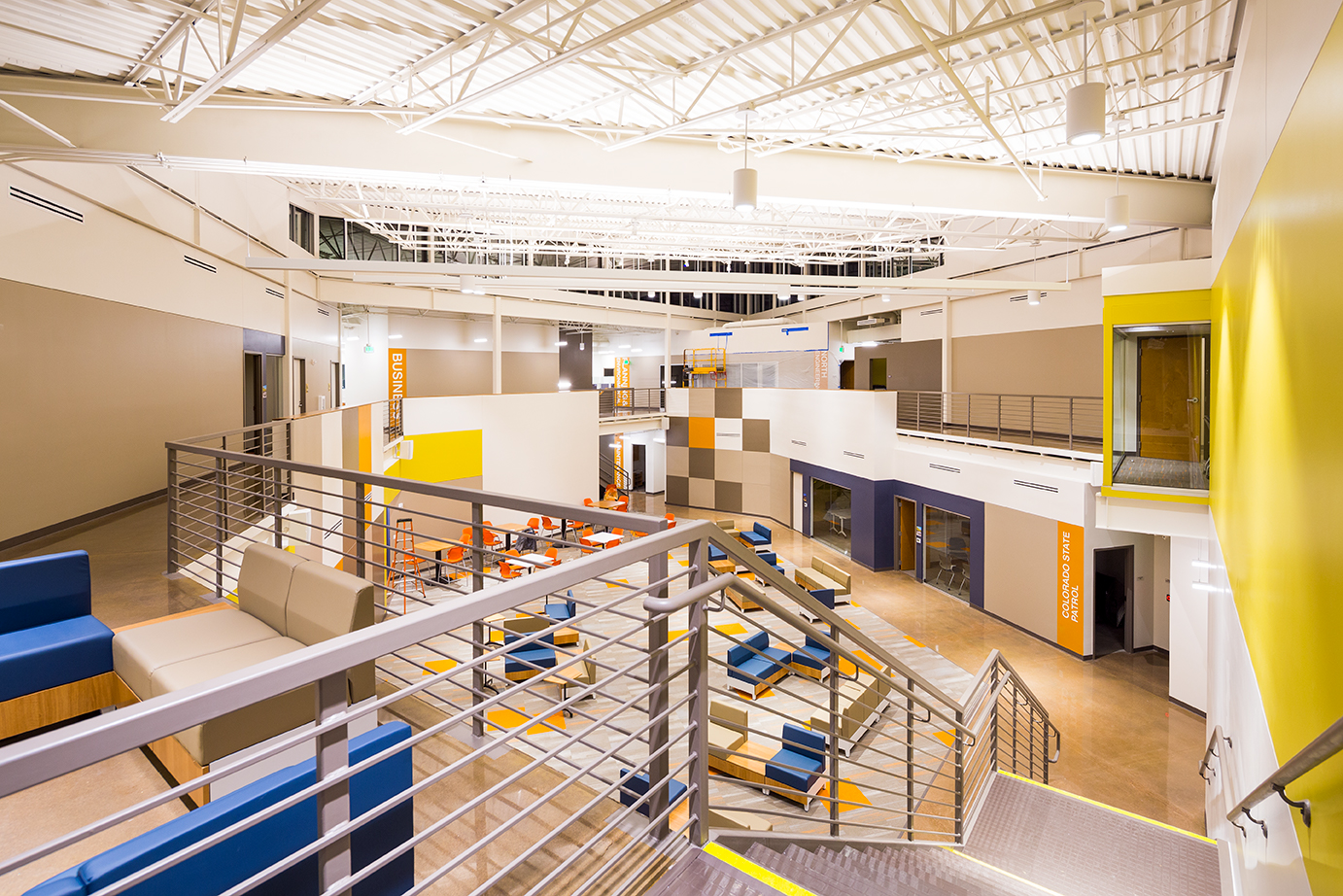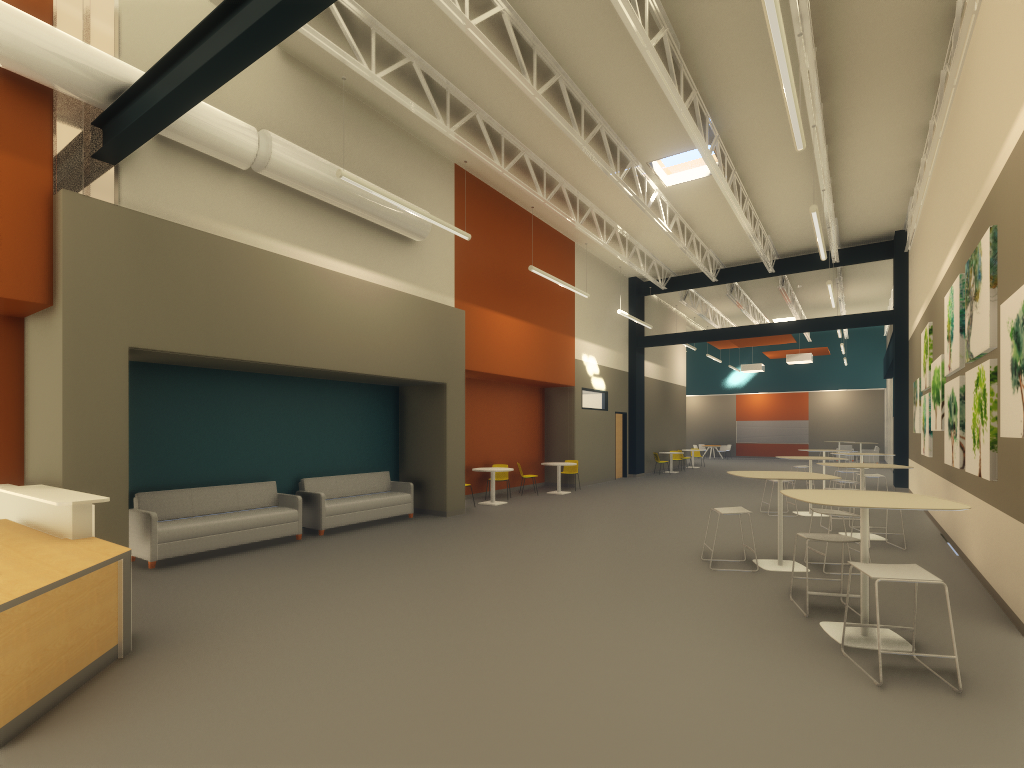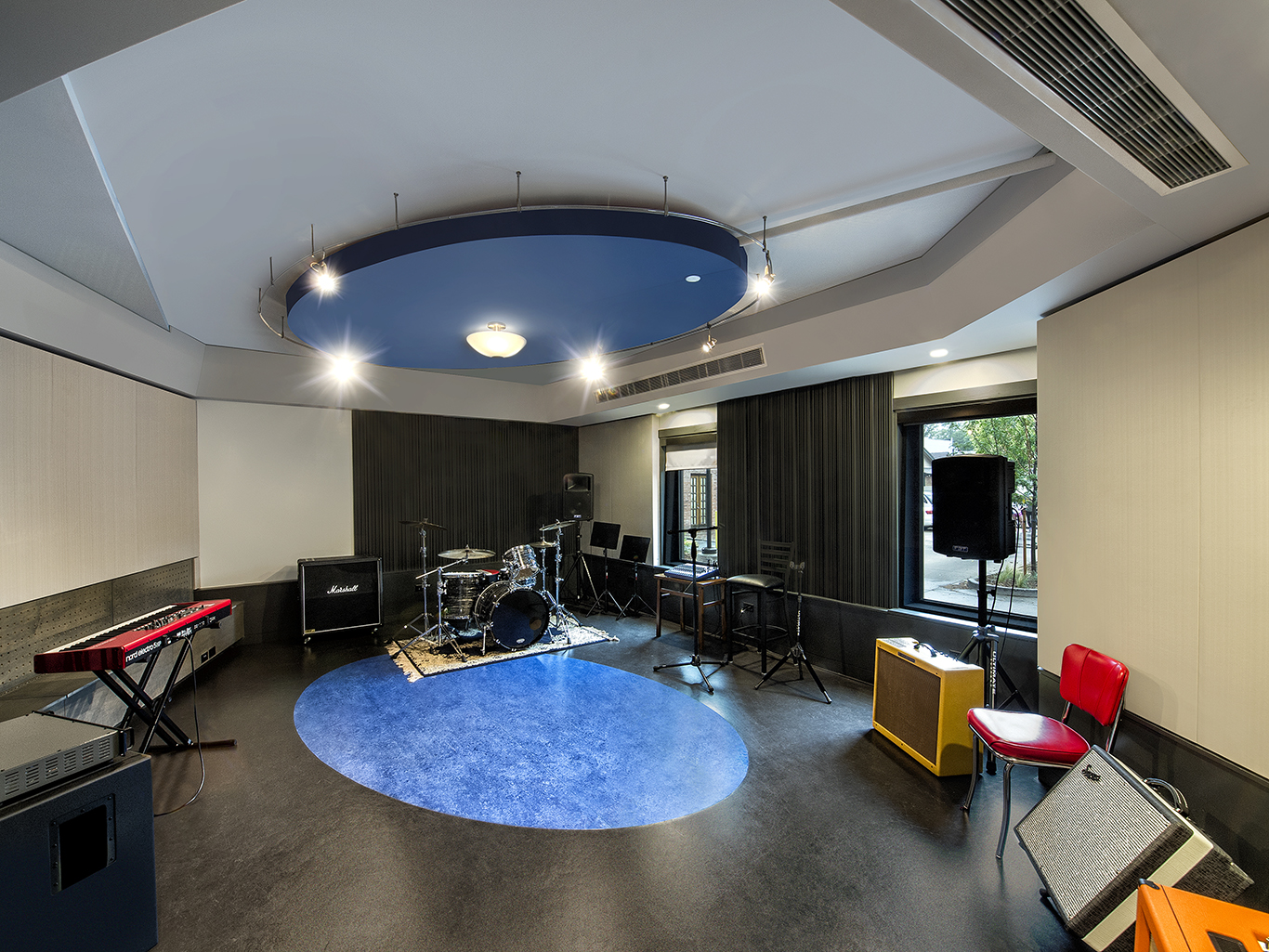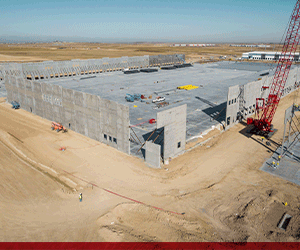by Megan Ellis, Interior Designer at The Neenan Company
By understanding that their [millennials’] jobs are a large part of employees’ lifestyles, adding amenities helps to keep the workforce engaged and connected to their positions by enriching the employee experience
Millennials, as of last year, mark the largest generation in the nation’s labor force, and they bring a shift in values unique from those common in previous generations. With this, companies realize, comes a shift in the workplace as well.
To help capture the talent within the evolving workforce, employers are looking at ways in which they can change the physical office to offer a setting productive to the evolving work styles.
Employers are re-evaluating the amenities they offer to their employees based on the values of the younger generation. Companies are catering to Millennials’ interest in workplace features such as outdoor space, break rooms, and fitness spaces. Interactive break rooms simulate a coffee shop atmosphere and include access to the company’s network. Incorporating fitness opportunities like exercise space, bike storage and showers allow workers to easily blend fitness into their work life.
By understanding that their jobs are a large part of employees’ lifestyles, adding such amenities helps to keep the workforce engaged and connected to their positions by enriching the employee experience.
Millennials are recognized for their team-minded, collaborative approach to workflow. Design-build companies have already incorporated unconventional workspaces such as open office layouts with benching workstations rather than traditional high cubicles.
This same collaborative mindset translates to Millennials desiring less division between them and supervisors, wanting more access and fewer barriers. Increasing the transparency within the office can help organizations break down barriers in employee communication. Many companies are using glass walls to increase transparency.
 While the younger generation of professionals tends to be most productive in an open, collaborative environment, other groups of employees with differing work styles must also be considered during the design process. Acoustic privacy is one of the biggest complaints by employees transitioning from a traditional work environment to an open office. Sound transfer can be minimized with acoustic design techniques such as increasing soft surfaces and adding mobile acoustic wall panels. Focused spaces can also be incorporated into the design, offering a quiet zone for employees.
While the younger generation of professionals tends to be most productive in an open, collaborative environment, other groups of employees with differing work styles must also be considered during the design process. Acoustic privacy is one of the biggest complaints by employees transitioning from a traditional work environment to an open office. Sound transfer can be minimized with acoustic design techniques such as increasing soft surfaces and adding mobile acoustic wall panels. Focused spaces can also be incorporated into the design, offering a quiet zone for employees.
In line with the multitasking habits and flexibility preferences of this age group, many employers are also seeking to increase opportunities for informal brainstorming sessions and discussions. Huddle rooms are becoming increasingly popular, as they are meant to accommodate small groups of employees for meetings, but the environment feels much less formal than the traditional conference room. Open conference areas integrated into the workstation layout for impromptu collaboration are another way to increase interaction among employees.
Designers are emphasizing the importance of multi-functional spaces. Space is valuable and a large conference room that is only used once or twice a week is underutilized. A central, larger open floor space with furniture that is easy to move promotes a flexible, informal environment. Employees have the option to pull some of the seating together to form a break area for lunch or push the furniture aside to hold an all-staff meeting.
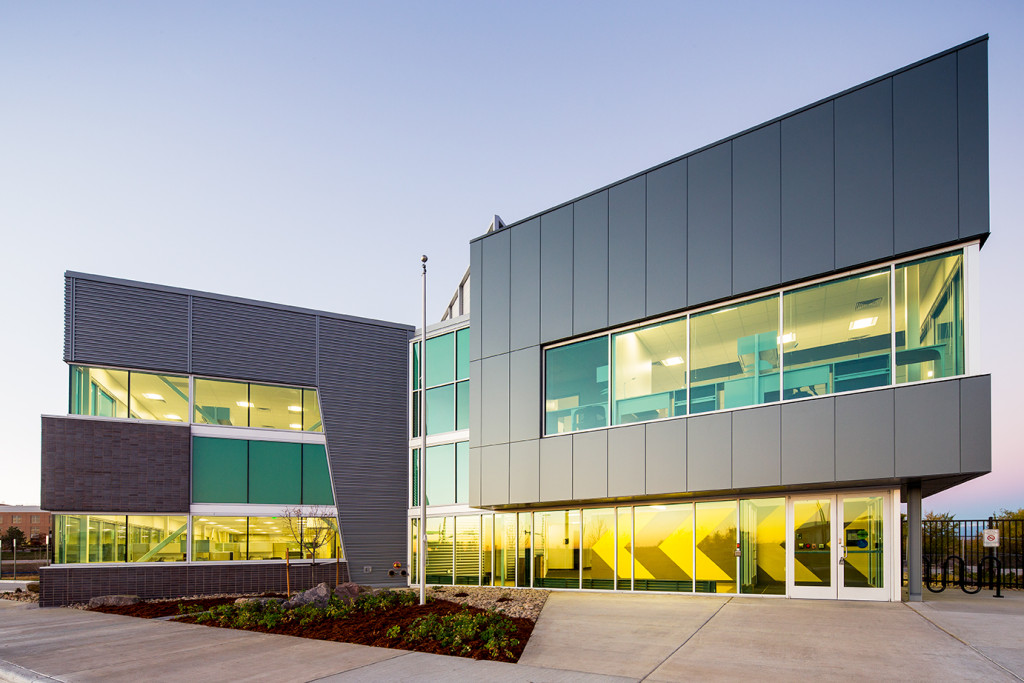
Another trend receiving considerable attention is a building’s sustainability. Millennials are often conscientious about environmentalism. LEED standards have greatly influenced the construction industry, with a vast array of options in products and materials that meet LEED requirements for recycled content. As the LEED requirements push the limits of products and construction, the industry rises to meet the demand.
Millennials’ concern for the environment has been one factor prompting employers to consider not only sustainable design and building material options, but also how the building can support employees’ sustainable lifestyles. With young professionals driving less and instead choosing alternate modes of transportation to get to work, it is becoming increasingly common to see offices that support commuting on foot or by bike. Employers are incorporating indoor bike racks and kitchens with non-disposable dishes and utensils, to support Millennials’ desire for a lower carbon footprint.
In today’s competitive landscape, companies are focused on how to attract and retain top talent, especially young professionals. By understanding the shifting values and work styles of Millennials, leaders in the design-build industry can help their clients achieve an office environment that elevates their workforce.
[Editor’s Note: The pictures are from the CDOT Region 4 office: a design-build project with The Neenan Company and Humphries Poli Architects]
Photos courtesy of The Neenan Company; Photo credit: Paul Brokering Photography



